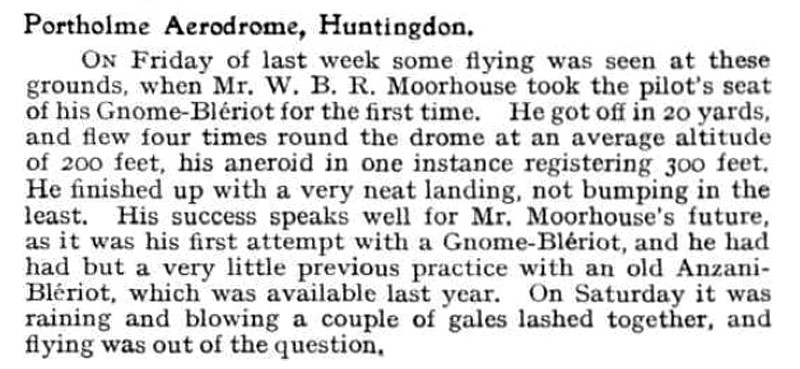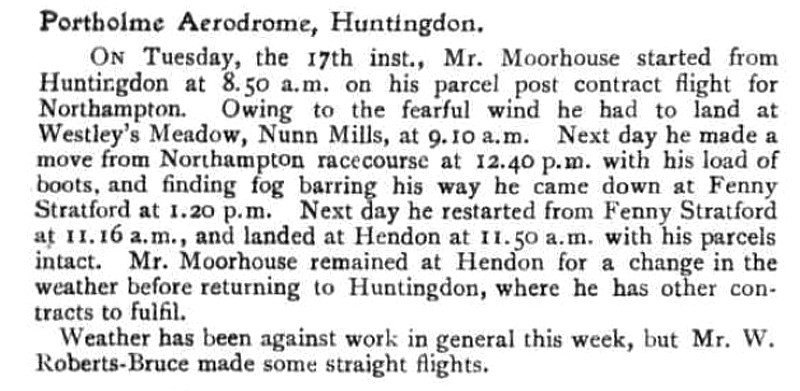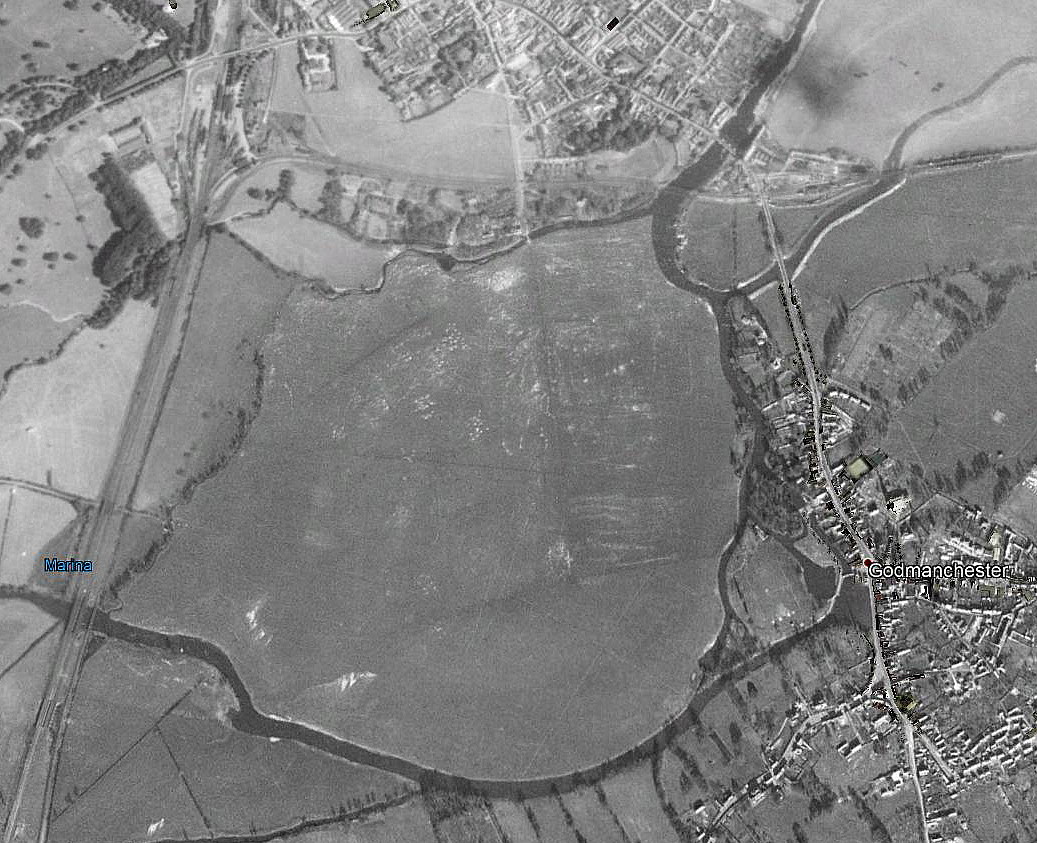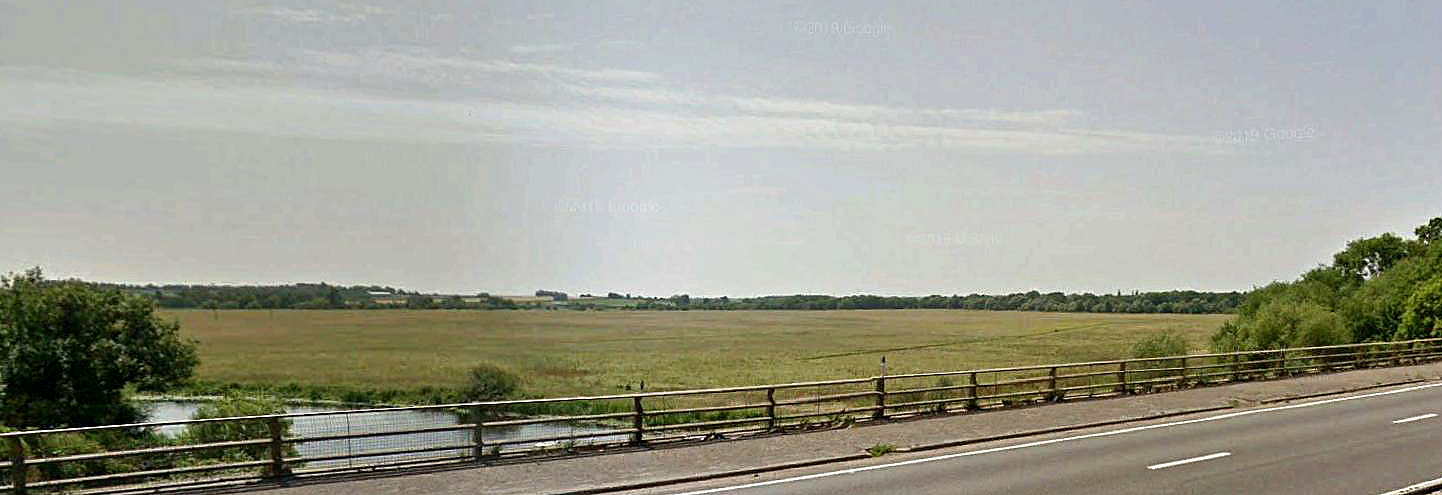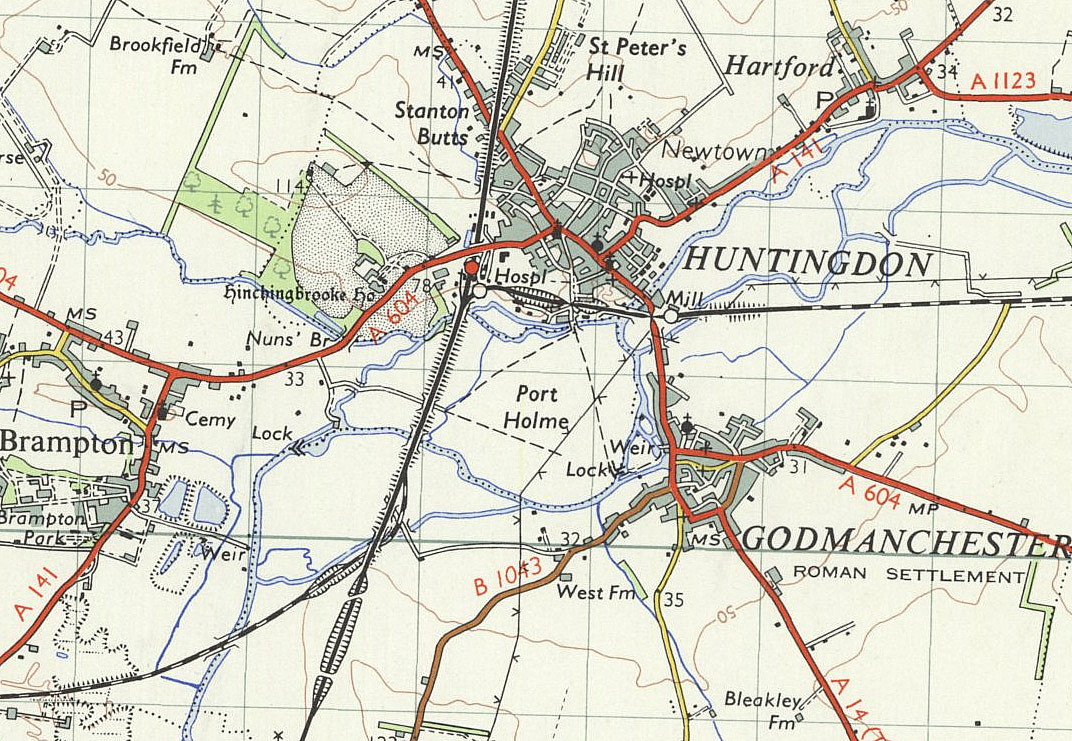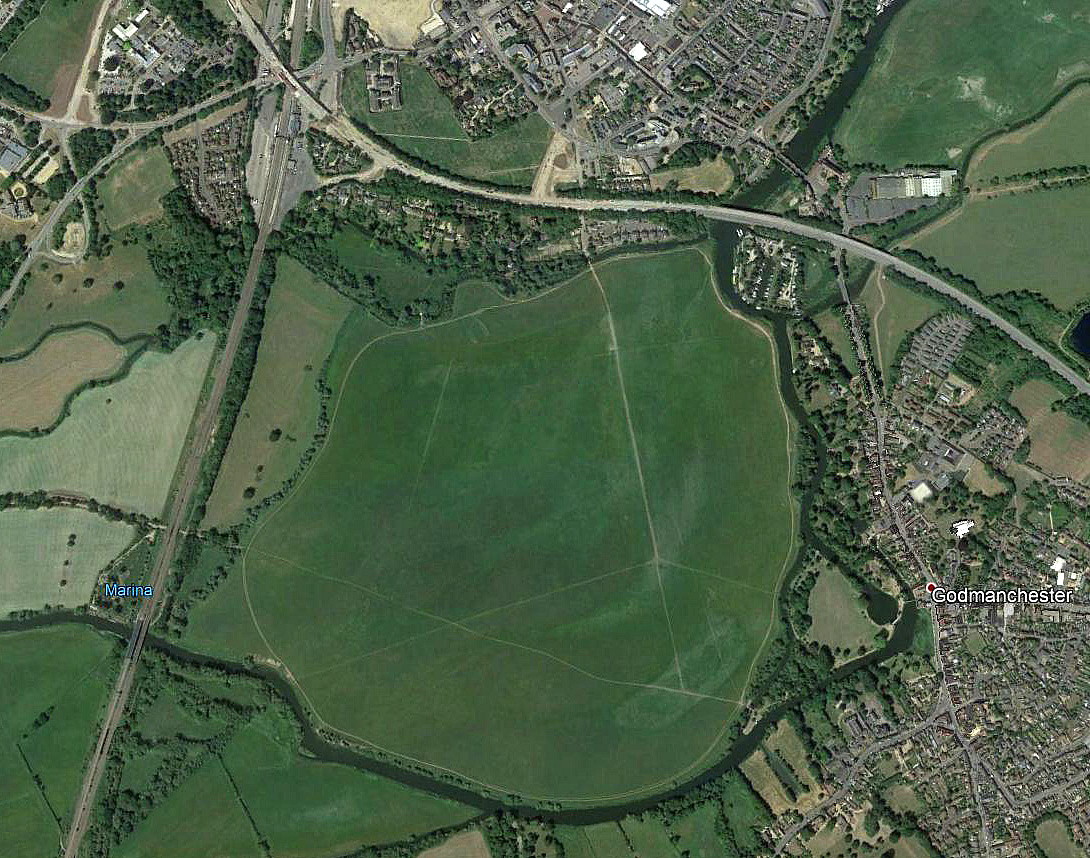Port Holme
Note: This map shows the area, near Huntingdon, known as Port Holme.
NOTE: I have made two seperate entries here, for PORT HOLME and PORT HOLME MEADOW, (let alone HUNTINGDON RACECOURSE listed as a seperate entry), as I believe there could be two or even more sites involved in this area. And, as you can easily see, there is a lot of history to unravel in this area.
Needless to say, if anybody can kindly help to unravel this history, this will be very much appreciated. One complication is that so many accounts refer to this site simply as PORTHOLME, whereas the maps clearly indicate it is spelt with two words.
PORT HOLME: Early flying ground or airfield (aka HUNTINGDON)
Location: Roughly 1 to 2nm S of Huntingdon town centre
Period of operation: 1910 to 1913 only? Permission to use being required it seems
NOTES: Without too much doubt HUNTINGDON AERODROME, HUNTINGDON RACECOURSE, PORT HOLME and PORT HOLME MEADOW were all one and the same place? Or were they?
ROBERT F MACFIE
Returning from France in possibly 1910 (?) Mr Robert F Macfie started building a machine in PORT HOLME but permission to fly it was denied so he transferred to BROOKLANDS. I now (in 2014) strongly suspect that he did fly it but that permission to continue flying it was prohibited?
It has to be remembered that in England at least, (and ever since), mostly hostile and invariably negative beauracratic interference in aviation persists, whether justified or not! Plus, lets not forget the NIMBYs!
It seems to me rather odd that in a country with a huge interest and appetite for aviation, (check out air show attendance figures for example), that beauracrats (usually of minor authority?), so often seem opposed. Why should this be?
WILLIAM BARNARD RHODES MOORHOUSE
Note: Both of these articles were kindly provided by Mr Michael T Holder
William Rhodes-Moorhouse was the first-ever recipient of a Victoria Cross for aerial operations. He didn’t legally adopt the surname Rhodes-Moorhouse until 1912.
According to official records W B R Moorhouse listed PORT HOLME as the place where he gained his flying experience in a Blériot Monoplane to be granted his Pilots Certificate No: 147 dated 17/10/11.
In his excellent book For Valour, The Air VCs Chas Bowyer adds some more information about Moorhouse: “Learning to fly at his own expense, Will began a series of experiments in designing monoplanes and, in 1911, joined forces with James Radley in designing the Radley-Moorhouse monoplane; an Anzani-engined derivant of the Bleriot XI aircraft. By then he had already established himself as a pilot of repute, and his many flights from the old Huntingdon airfield usually attracted several thousands of spectators from surrounding towns and villages; eager witnesses to the ‘daring’ pilot’s skilful demonstrations of the new art of aviation.
In 1911 Moorhouse travelled to America and there, piloting a 50hp Gnome-engined Bleriot monoplane, participated in most of the contemporary speed and cross-country race meetings across the USA, and collected several thousand dollars in prize money for his successes.”
Returning from the USA he, “….continued his quest for speed adventure by taking part in most of the increasingly popular flying meetings in Britain, including the first Aerial Derby at Hendon in June 1912 in which he earned third placing.” Typically (as so many did in WW1) he died in France after a combat sortie and being hit many times from ground fire when flying a BE.2 with 2 Squadron from Merville.
A FLYING MEETING
In 1910 a Flying Meeting was held here, before the bigger event at WOLVERHAMPTON (DUNSTALL PARK) and the much more famous Meeting at BOURNEMOUTH in July. It appears Mr J Radley did the fastest mile in one minute forty-seven and a half seconds, setting a British speed record. Would that be about 41 mph if I’ve got my sums correct? The World Airspeed Record set in 1910 was 67.5 mph.
Quite possibly it was here that Mr James Radley was flying a Blériot? Later I found a photograph purporting to establish this as a ‘fact’. Yet further reading seems to indicate that Mr Radley was the leading figure at PORT HOLME and quite possibly offering flying lessons as well as designing and building aeroplanes.
In the closing month(s) of 1912 Mr Gordon England became associated with James Radley and produced a seaplane, the first triple-engine machine in the world. “It was wrecked by hitting a buoy when alighting,” according to C C Turner in his, (for me at least), wonderful book of recollections, Old Flying Days published in 1927. This is especially interesting as modern maps do not seem to show a significant body of water in this exact area. So, did they use lakes and/or reservoirs in this area such as Grafton Water?
The name Gordon England crops up time and time again and little wonder. He was partly a freelance test pilot and aircraft designer, a very useful man. He test flew designs for A V Roe, Blériot, Bristol, Cedric Lee, Farman, Hanriot, Radley-England, Short, Weiss and Wight from sites such as BROOKLANDS (SURREY), COWES (ISLE of WIGHT), SHOREHAM (SUSSEX) and LARKHILL (WILTSHIRE).
PORT HOLME MEADOW: Initially civil & military aerodrome in WW1. Later temporary aerodrome
Military user: RAF Training Depot Station 1918
RAF Summer Camp 1918 to 1919
Operated by: WW1: Portholme Aerodrome Ltd
Location: Old Racecourse, Huntingdon. S of the A14, just NW of Godmanchester, about 0.5nm S to SSW of Huntingdon town centre
Period of operation: WW1, later 30th May 1933, 1st July 1935
Site area: WW1: 130 acres 914 x 823
NOTES: In June 2020 I was kindly contacted by Mr Tony Beeston who informed me that PORT HOLME MEADOW was a final erection site for Sopwith Camels built in the town. The RAF arrived in 1917 with many aircraft types including the Handley Page 100s bombers. He has researched the site and tells us that seaplanes built there were shipped by rail to the Isle of Wight for testing. (Which to me seems an act of lunacy). He says they were poorly built, but, one made it as deck cargo to Gibraltar!
Also the 11th venue for Sir Alan Cobham’s 1929 Municipal Aerodrome Campaign. This Tour started in May and ended in October, planning to visit one hundred and seven towns and cities. Mostly in England but with two venues in Wales and eight in Scotland. Without any doubt this Tour encouraged the construction of several aerodromes / regional airports.
The aircraft he mostly used for this Tour was the ten-seater de Havilland DH61 'Giant Moth' G-AAEV, named 'Youth of Britain'. In the end, with a couple of crashes and other setbacks he managed to visit about 95 venues. Still a magnificent achievement of course.
A MICHAEL T HOLDER GALLERY
FLYING CIRCUS VENUES?
Perhaps also the venue for Alan Cobham’s 1933 No.1 Tour of the UK, and indeed, Cobham’s 1935 No.2 Tour. In fact it appears this site, near Huntingdon, was the initial venue for the 1935 No.2 Tour. The address being - Old Racecourse, Portholme Meadow, Huntingdon.
We'd love to hear from you, so please scroll down to leave a comment!
Leave a comment ...
Copyright (c) UK Airfield Guide















